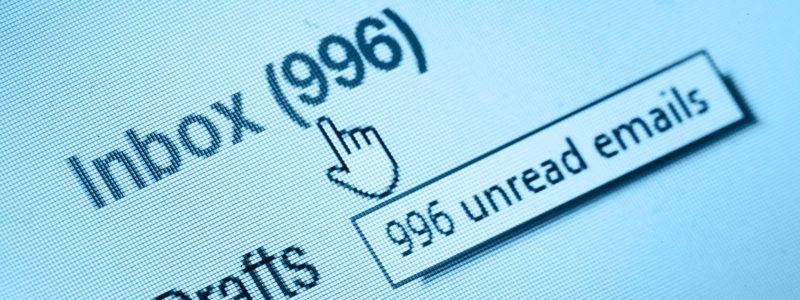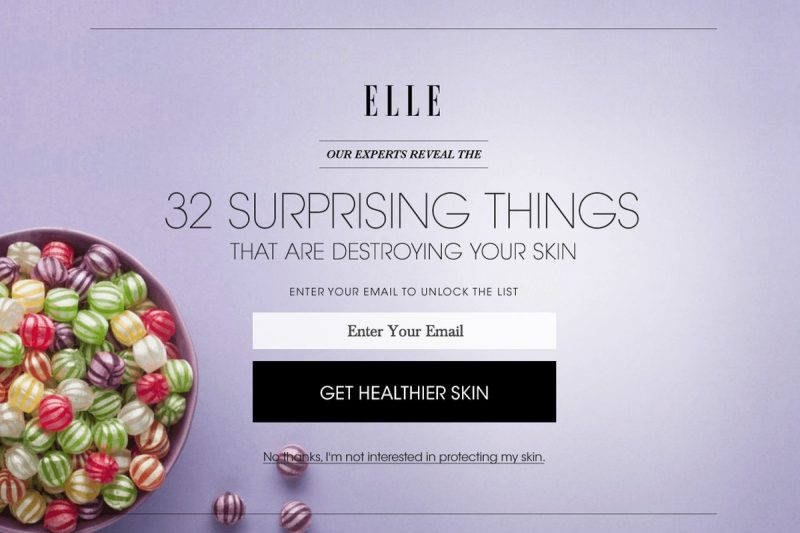New Year’s resolution:
A tradition, in which a person resolves to change an undesired trait or behaviour, to accomplish a personal goal or otherwise improve their life.
It’s that time of year when the motivated masses pledge to be better, aim higher, go further – and in the world of marketing, there is always room for improvement.
So, in the spirit of this age-old tradition, here are 5 email marketing resolutions to adopt this year for enhanced success.
Resolution #1 – Stop sending so many emails
For eCommerce businesses especially, November to January tends to be a busy period – there’s Black Friday, Christmas, perhaps a post-Christmas sale, and then the January sales. This means that inbox activity tends to be very lively as brands push out their offers to their subscribers.
Frequency is a subject I often talk to clients about. I am a big believer in sending emails less frequently, but with more added value. This is especially true for high-end brands, or those who sell large price ticket items and likely won’t see that same customer come back for a few months. In these cases, it doesn’t make sense to send them 3 emails a week.

If you send multiple emails a week, the likelihood is that your subscribers will lose interest quickly and stop opening your emails.
Email marketers need to figure out what frequency works best for them. Do some testing – could a fortnightly email provide more value than 2 sends a week? Try testing it out for a few months and see what impact this has on your figures.
Respect your subscribers’ inboxes and put yourself in their shoes – would you be happy to be on the receiving end of the current email schedule?
Resolution #2 – Stop emailing inactive users
After conducting an email marketing audit for a new client, one of the things I often recommend is to stop emailing inactive users.
This doesn’t always go down well – clients want to maximise the opportunity available and reach as many people as they can, and when it comes to email, this often means emailing their full list.
However, continually emailing inactive users can be detrimental to your overall strategy, I often recommend against it, or alternatively, advise a separate strategy for inactive users.
If a user has not engaged with your emails or brand for the last 12 months, how valuable are they to you? They are bringing down your stats and probably costing you money if your email service provider charges by the number of subscribers you have.

Have a good look at your list and see if you can get rid of some inactive subscribers – this will bring your costs down and improve your ROI.
If the thought of this makes you feel a bit uneasy, try running a re-engagement campaign first to try and win subscribers back. If it doesn’t work, it is time to say goodbye.
Resolution #3 – Know your subscriber
Have you ever opened an email only to find the product you bought last week is now on sale? This scenario is so frustrating and I see it far too often.
A recent example in my inbox was an email from a brand I had recently bought a dining table from. The email was all about dining tables. It could be that my purchase history had put me in some kind of “interested in tables” segment, but this email didn’t make sense to me. I had just bought a table – I didn’t need another one. What’s more, the table I bought was featured in the email, now at £50 less than I bought it for!

It got me thinking that this brand had not got it quite right with their email marketing. The best thing for them to have done would have been to email me thanking me for my recent purchase, then try to cross-sell me some relevant products such as table runners or cutlery.
Sending relevant content is key in keeping users engaged with your emails – have a think about the data you hold about your users and consider how you could use that data to segment different types of subscribers.
Resolution #4 – stop asking me to sign up to your emails when I am already on your list
Another thing I find annoying is when I click through to a website from an email, only to be faced with a pop-up box immediately asking me to sign up for emails. I just came from one of your emails!
Pop-up boxes do work well when it comes to collecting subscribers, but email marketers need to do better at configuring them and proceed with caution.
Adding some conditions is sensible – you could only show the pop-up box when a user is looking like they are about to exit the page, or you could set the pop-up to not show for users that come through from email traffic.
And while we’re on the subject of forms, I would love to see the death of passive-aggressive opt-outs like this:

Resolution #5 – stop with the noreply@ email addresses
A common practice when reading an email in your inbox, is to hit the reply button and send a response. Granted, this is more common when viewing personal emails rather than promotional ones, however, there are times when someone may want to reply to a brand and ask a question or give feedback.
It is frustrating to find a ‘donotreply@’ email address when trying to do this – it’s almost as if the brand is saying they don’t want to hear from you.
I encourage email marketers to get rid of this practice and use a real email address that goes to a monitored inbox. Yes, you will have to deal with a lot of bounce backs – but you can set up some filters to get rid of those. Your subscribers may have interesting and valuable feedback for you – so let them reach out.

So, there you have it – 5 New Year’s resolutions for email marketers. Got some helpful tips of your own? We’d love to hear them – comment below and join the conversation!
